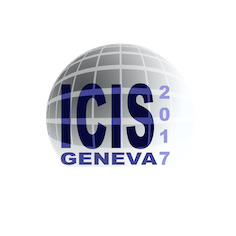Speaker
Description
The ITER project requires additional heating provided by two injectors of neutral beams (NB) resulting from the neutralisation of accelerated negative ions. To study and optimise negative ion production, the SPIDER (Source for Production of Ions of Deuterium Extracted from an Rf plasma) test facility is now in the assembly phase in Padova, with the aim of testing beam characteristics, verifying the source proper operation and providing a test bench for the diagnostic systems to be operated in the full-energy prototype of ITER NB injectors.
The target of the SPIDER facility is to produce a focussed H$^-$ or D$^-$ ion beam, having particle energy of 100 keV and beam current of 58 A in H$^-$ or 45 A in D$^-$. The beam particles will be produced in a radiofrequency-driven plasma source having a power up to 800 kW. During the first operational stage, negative ions will be generated in the plasma volume whereas, later on, negative ion production will be substantially increased by a thin layer of caesium evaporated onto the source surfaces. SPIDER experiments will start at the beginning of 2018.
The present contribution briefly describes the specific features of the SPIDER accelerator and concentrates on the preliminary phases of SPIDER operations, dedicated to source and accelerator commissioning with the goal of increasing SPIDER performances, voltage holding conditioning of the accelerator, caesium conditioning of the source; beam extraction will be carried out.
The expected beam features are analysed by means of numerical simulations, considering the detailed magnetic and electrostatic configuration of the accelerator, the various operational phases, the corresponding expected source and beam parameters. These results are most useful to prepare for the earliest experimental campaigns. Correspondingly the expected results of the beam diagnostic techniques, like beam emission spectroscopy, beam dump calorimetry and the instrumented calorimeter STRIKE, are computed in cases with optimal beam optics as well as far from the optimum conditions.
Acknowledgement
The work leading to this publication has been partially funded by Fusion for Energy (F4E). This publication only reflects the views of the authors, and F4E cannot be held responsible for any use which may be made of the information contained therein. The views and opinions expressed herein do not necessarily reflect those of the ITER Organization.




